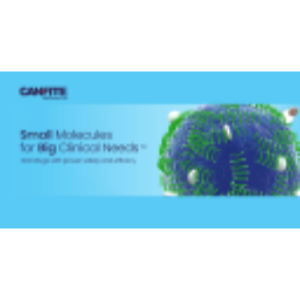Can-Fite Broadens its Strong Intellectual Property (IP) for NASH: Received Patent Allowance in Canada
Patent has already been issued in other major markets including the
PETACH TIKVA,
Can-Fite’s Namodenoson, is currently out-licensed for the treatment of NASH to the Swiss company Ewopharma for territories in
“This additional patent in
The NASH market is expected to reach $24 billion by 2028. According to the American Liver Foundation, between 30
About Namodenoson
Namodenoson is a small orally bioavailable drug that binds with high affinity and selectivity to the A3 adenosine receptor (A3AR). Namodenoson is currently being evaluated in a pivotal Phase III trial for advanced liver cancer, a Phase IIb trial for the treatment of steatotic liver disease (SLD), and the Company is planning a Phase IIa study in pancreatic cancer. A3AR is highly expressed in diseased cells whereas low expression is found in normal cells. This differential expression may be one of the important factors that accounts for the excellent safety profile of the drug.
About Can-Fite BioPharma Ltd.
Can-Fite BioPharma Ltd. (NYSE American: CANF) (TASE: CANF) is an advanced clinical stage drug development Company with a platform technology that addresses multi-billion dollar markets in the treatment of cancer, liver, and inflammatory disease. One of the two Company's lead drug candidates, Piclidenoson recently reported positive topline results in a Phase III trial for psoriasis. A pivotal Phase III for this drug is expected to commence soon. Can-Fite's other lead drug for treating cancer and liver diseases, Namodenoson, is being evaluated in a Phase IIb trial for the treatment of steatotic liver disease (SLD), a Phase III pivotal trial for hepatocellular carcinoma (HCC), and the Company is planning a Phase IIa study in pancreatic cancer. Namodenoson has been granted Orphan Drug Designation in the
Forward-Looking Statements
This press release may contain forward-looking statements, about Can-Fite’s expectations, beliefs or intentions regarding, among other things, its product development efforts, business, financial condition, results of operations, strategies or prospects. All statements in this communication, other than those relating to historical facts, are “forward looking statements”. Forward-looking statements can be identified by the use of forward-looking words such as “believe,” “expect,” “intend,” “plan,” “may,” “should” or “anticipate” or their negatives or other variations of these words or other comparable words or by the fact that these statements do not relate strictly to historical or current matters. Forward-looking statements relate to anticipated or expected events, activities, trends or results as of the date they are made. Because forward-looking statements relate to matters that have not yet occurred, these statements are inherently subject to known and unknown risks, uncertainties and other factors that may cause Can-Fite’s actual results, performance or achievements to be materially different from any future results, performance or achievements expressed or implied by the forward-looking statements. Important factors that could cause actual results, performance or achievements to differ materially from those anticipated in these forward-looking statements include, among other things, our history of losses and needs for additional capital to fund our operations and our inability to obtain additional capital on acceptable terms, or at all; uncertainties of cash flows and inability to meet working capital needs; the initiation, timing, progress and results of our preclinical studies, clinical trials and other product candidate development efforts; our ability to advance our product candidates into clinical trials or to successfully complete our preclinical studies or clinical trials; our receipt of regulatory approvals for our product candidates, and the timing of other regulatory filings and approvals; the clinical development, commercialization and market acceptance of our product candidates; our ability to establish and maintain strategic partnerships and other corporate collaborations; the implementation of our business model and strategic plans for our business and product candidates; the scope of protection we are able to establish and maintain for intellectual property rights covering our product candidates and our ability to operate our business without infringing the intellectual property rights of others; competitive companies, technologies and our industry; risks related to the COVID-19 pandemic and the Russian invasion of
View source version on businesswire.com: https://www.businesswire.com/news/home/20240228950836/en/
Can-Fite BioPharma
Motti Farbstein
info@canfite.com
+972-3-9241114
Source: Can-Fite BioPharma Ltd.







